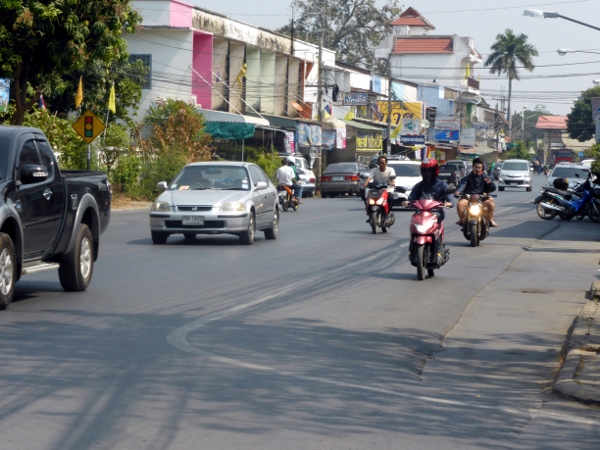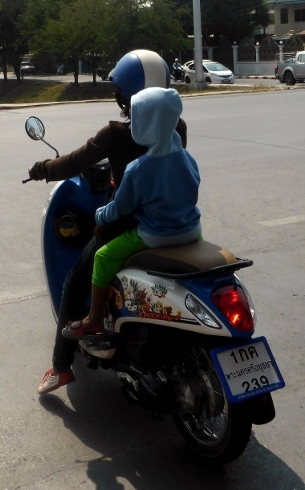Motorcycles - Long gone in Yangon
How does the traffic flow when motorcycles are banned?
In Yangon in Myanmar, noxious fumes emanate from beneath the cracked paving slabs which sit like snares, poised to snap at the ankles of the unwary, and mix with the exhaust-laden air to form a stifling blanket which lies on the city, as thick as soup.
Between the Betel spattered slabs where street food vendors fry chilli in choking clouds, thunders a never ending murderous cohort of cars, taxis, buses and trucks, hell bent on personal survival at any cost in the wild heat of the city of 5 million people.
One vehicle which is notable for its absence though, is the motorcycle. Rumours abound as to why motorcycles were banned in Yangon in 2003. Some say a general’s son was killed on one, some say someone on a motorcycle made a threatening gesture to a general, some say pro-democracy leaflets were distributed from a motorcycle, some say it was a noise pollution control method... who knows which of these apocryphal tales, if any, is true.
Whoever banned motorcycles in perpetuity may have thought he was doing the city a favour but in fact he has done it a great disservice.
Now four wheeled traffic is the dominant force in Yangon. Walking anywhere is to dice with death, waiting for a gap in the traffic to cross the road is to wait forever. The only crossing method which works is to step out into the racing traffic praying, while cars and buses speed directly at you once you have left the comparative safety of the pavement.
In the burbs, the Croydon of Yangon, the traffic does not move at all. Here bus conductors lean out of central bus doors, waving their arms violently and slapping cars in a vain attempt to change lanes, while the taxis stare ahead impassive and unmoving, apparently blind to their endeavours, no quarter given.
To the anti-motorcycle lobby a ban might seem like a great idea but when it is lived in a busy city like the teeming metropolis of Yangon, it has actually managed to contribute to a traffic hell on earth.
This is mainly because every would-be motorcycle rider has to be a driver instead, with the effect of probably quadrupling the traffic. On many a road where bikes should be nipping and zipping along keeping all the traffic flowing, car drivers sit, stationary and fuming. And where the traffic is still moving it is frantic and frenetic in its attempts to get to its destination before things snarl up.
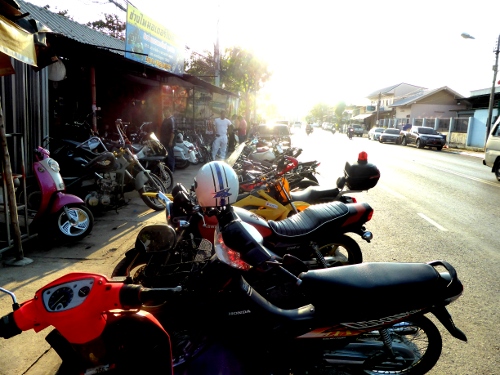
Motorcycles aplenty
In other cities in Myanmar and in neighbouring Thailand, it’s a different story. Here the motorcycle and scooter rule the streets and the traffic flows fast and crazily. The rigid legislation of the UK and the outright ban of Yangon are a million miles away as whole families of three, four or five ride squeezed on together, women hop on sidesaddle and everyone is responsible for themselves. Motorcycles are abundant here and their riders are smiling.
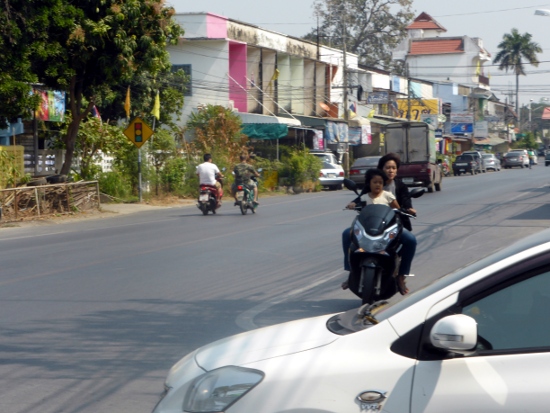
Off to nursery
The pros and cons are obvious.
Pros

Just cos we wearin clothes don't mean we ain't cats!
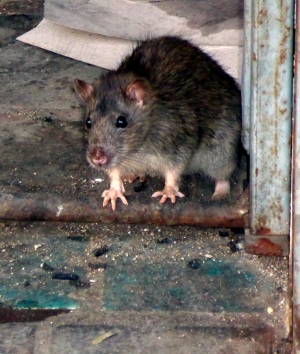
Come on sonny want some!
Where the motorcycle rules, traffic flows, people can get around fast and do not have to sit static
and literally fuming in traffic jams. This gives them more time to dress their cats and play with their rats.
Air pollution is lower – one bike with several people on, versus one car, taxi or truck with often one person in – the equation is obvious, and all the inhabitants of the city benefit from reduced pollution and cleaner air.
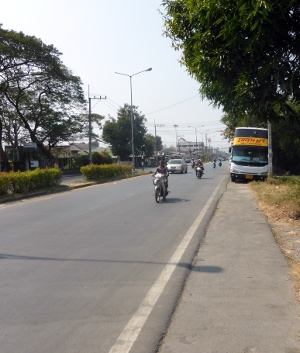
Ah the open road beckons
Economy of scale
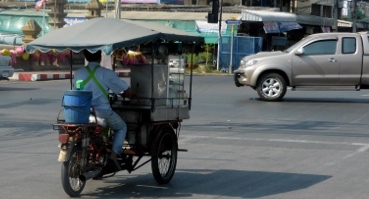
Lunch is on its way
Motorcycles are cheaper to buy own and run as well and, as we know, do many miles to the gallon compared to cars. Thus poorer people have the chance to own their own personal transport, giving them freedom from public transport costs and opening up hitherto unreachable places to ordinary people.
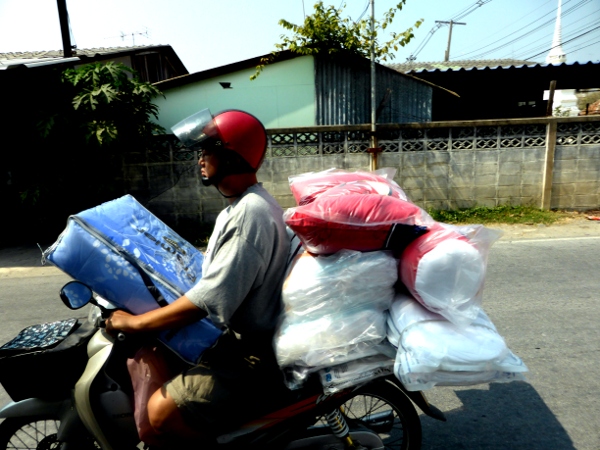
Delivery truck? No need...
This has the added benefit of giving them more job opportunities as they can get to work in far flung places quickly, and this can help them to get out of the poverty trap and benefit whole families.
Where motorcycles are used daily on busy streets the riders become highly skilled and reactive and, because there are so many motorcycles on the roads, they are more factored in by the car drivers who seem much more aware of them due to their ubiquity.
Cons
Motorcycles used as family transport and as hop on hop off people movers can be more dangerous in heavy traffic, especially as helmets are often more of an accessory than a requirement. Obviously as seen in the photos, small children hanging on without any protective clothing or helmet is not a good idea.
How do you feel about these issues – have you seen any of it in action and if so what did you think? Are you pro the freedom to ride as you like as it is done in many countries in Asia, or do you think it is dangerous and irresponsible? Let us know at
[email protected]







